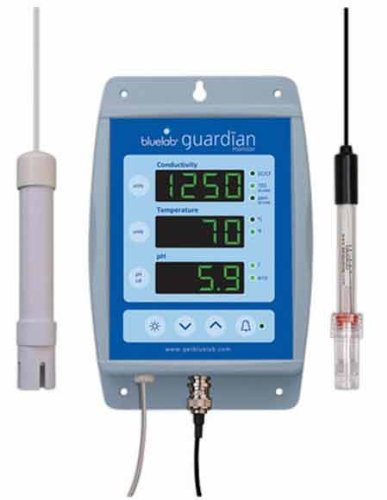Rak- lets start with the fact that Dr. Timothy Hovanec is a Ph.D. microbiologist. The research conducted by teams of researchers resulted in 3 peer reviewed published research papers which identified the bacteria in FW tanks which convert ammonia and nitrite. He has worked with these things using test apparatus which is capable of reading levels accurately enough to see what is in sample our kits could not even see.
Next, he cultivates and sells bacteria as part of how he makes his living. If he cannot control the levels of both ammonia and nitrite in this process it will not happen properly. Too much ammonia or too much nitrite will actually stall or kill the process and too little will result in too little bacteria.
But how about this, read all the information and instructions you can find in your API nitrite test kit. Go to the M aars site and see what you can find there too. See what they tell you about what can interfere with test results. Here is part of what come with the direcetions for the Hach kit Dr. Hiovanec used in that video:
[SIZE=12pt]Strong oxidizing and reducing substances interfere. Cupric and ferrous ions cause low results. Ferric, mercurous, silver, bismuth, antimonous, lead, auric, chloroplatinate and metavanadate ions interfere by causing precipitation.[/SIZE]
from
http /www.hach.com/asset-get.download.jsa?id=7639982796
/www.hach.com/asset-get.download.jsa?id=7639982796
Both copper ions and iron ions will interfere with test results. Both of these items are found in most fw tanks. Most of the other items mentioned are not common in tanks..
Ferrous (Fe2+), in
chemistry, indicates a
divalent iron compound (+2
oxidation state), as opposed to
ferric, which indicates a
trivalent iron compound (+3 oxidation state).
from
http /en.wikipedia.org/wiki/Ferrous
/en.wikipedia.org/wiki/Ferrous
The other thing about the Hach kit is it measures on the nitrogen scale which means to convert the results to the total ion scale used by API etc. you must multiply the results by 3.33. Since the API test only reads to 5 ppm on the Hach kit this would be 1.5 ppm on the Hach. Bear in mind that the level of nitrite which starts to become toxic to the ammonia and nitrite oxidizing bacteria strains we want in tanks will be retarded and even killed when the nitrite levels exceed 5 ppm on the nitrogen scale. On an API kit this would be a reading of 16.4 ppm. This is relevant for cycling. Moreover, if one wants to use chloride to counteract nitrite, one must be able to read the nitrite levels accurately.
The Hach kit also comes supplied with deionized water to use for diluted testing which it explains how to do, not a word on this comes with hobby kits instructions. Oh yes, compare costs- API kit $5.00 for 180 tests and the Hach is $79 for 100 tests. Which would you expect to be the more accurate?
Next, on Dr. Tim's site he offers for sale only the Salifert kits and no others. So why would he then make a video as he did using a Salifert kit as one of the two he showed as able to give a false 0 reading vs the lab grade kit giving an much more accurate one. He doesn't sell Hach kits. What would be his motive to or benefit from "faking" that video?
That video was meant to illustrate a possibility and not to state that any 0 reading was not really 0. We all know that ammonia tests can be affected by decblors which contain ammonia detoxifiers or just plain old ammonia detoxifiers. The difference is that at least SeaChem tells you this if you poke around their site.
When one tests and gets a 0 reading for nitrite, how people then perform diluted tests using DI water to insure that 0 reading is accurate? Most folks don't even do diluted testing when their reading is at the top of the scale.
Finally, look at the Hach information as to what can interfere with the test results of their various kits etc. Why would they state what can cause inaccurate results for a given test if such things actually did not do so? Does it not make more sense that a maker of research grade testing equipment would be inclined to insure that users obtained the most accurate results possible?



 /www.hach.com/asset-get.download.jsa?id=7639982796
/www.hach.com/asset-get.download.jsa?id=7639982796 I guess I would have preferred if the sample he used contained a concentration closer to something we would expect to see during a cycle.
I guess I would have preferred if the sample he used contained a concentration closer to something we would expect to see during a cycle.

